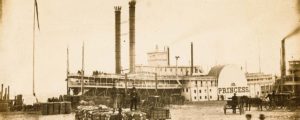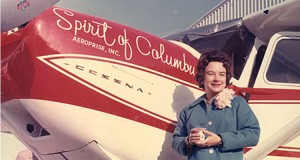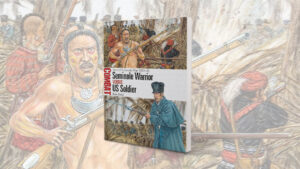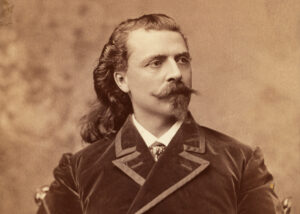Edward S. Curtis found his calling when he photographed one remarkable face in 1899.
The last Indian of Seattle lived in a shack down among the greased piers and coal bunkers of the new city, on what was then called West Street, her hovel in the grip of Puget Sound, off plumb in a rise above the tidal flats. The city was named for the old woman’s father, though the founders had trouble pronouncing See-ahlish, a kind of guttural grunt to the ears of the Midwesterners freshly settled at the far edge of the continent. Nor could they fathom how to properly say Kick-is-om-lo, his daughter. So the seaport became Seattle, much more melodic, and the eccentric Indian was renamed Princess Angeline, the oldest and last surviving child of the chief of the Duwamish and Suquamish. “Princess” was used in condescension, mostly. How could this toothless wretch living amid the garbage be royalty? How could this tiny beggar in calico, bent by time, this clam digger who sold bivalves door to door, this laundress who scrubbed clothes on the rocks, be a princess?
When Edward Curtis saw Angeline moving along the shore, she looked at once like the perfect subject. There against the deep waters of Puget Sound, there with the snow-mantled Olympic Mountains framed behind her, there with the growl of earth-digging machines and the snorts of steamships and loading crews and the clatter of streetcars and trolleys—with all of that, Curtis saw a moment from a time before any white man had looked upon these shores.
Curtis had developed a reputation for finding the true character of his subjects. He did the civic leaders—Judge Thomas Burke, the progressive hero who had stood up to a mob trying to force the Japanese out of Seattle by rifle and pitchfork. But he also captured the face of the trolley car driver who had saved a month’s pay to sit before Curtis in his spiffy uniform, of the sailor who planned his shore leave around a session in front of the camera.
Curtis approached Angeline with a proposition. He tried a simple negotiation, laying out his idea. Angeline backed away. Curtis used Chinook jargon, a few hundred words that had been a primitive trading language dating to the Hudson’s Bay Company days. Angeline shook her head.
Curtis opened his leather case and displayed a few portraits—beautiful, full-faced, radiant subjects. And such detail, like real life. He gestured to her and then to the picture.
At last he reached in to his pockets and produced some coins. More hand gestures followed. A simple exchange did the trick; money for picture. Up the hill they walked, Angeline pausing to rest every few steps, to the studio at 614 Second Avenue. Curtis had her sit and look around the room, daydream if she liked, gave her some tobacco for her pipe, maybe one of his cigarettes. Of course! After some time, she loosened the bandanna and the scarf.
“No, no! Just as you are.”
She did not smile, not even an attempt, and he did not want her to smile. He was looking for the lethal glare she saved for the boys who threw rocks at her. He hoped to convey a face that had seen worlds change, forests leveled, tidelands filled, people crushed. As a girl, she never dug a clam or washed a bit of clothing. Her father had slaves from other tribes do the menial work. Her current status, the scrubwoman in the shack, was anything but quaint.
He gave Angeline a dollar for her time, equal to a week’s worth of drudge work. What emerged from the many takes and the alchemy of developing chemicals was a face that could knock a door down with its slit-eyed stare. Curtis allowed light to fall on her cheekbones and nose, enough to contrast with the sad, dark eyes, looking away at another time.
The portrait of the princess was magnificent, and Curtis knew it, for everyone who saw it was impressed. But the picture was not what he’d had in mind when he first spied Angeline against Puget Sound. Over the following weeks Curtis returned to Shantytown. He saw Angeline in the mudflat, stooped and dark-cloaked, shovel in hand—the clam digger in her element. This was more like what he had seen in a flash that day on the shore. The sitting portrait was fine, but he was drawn to something more natural. Angeline had to fit her background, and that could never be the studio on Second Avenue. He gave her money to continue her grubbing and prying, as she had for decades.
From these everyday scenes came the inspiration for two pictures. One he called The Clam Digger, the other was The Mussel Gatherer. No frowning, vanquished Indians here. No starving, bedraggled aborigines. No warriors. They were neither threats nor objects of pity. The subsistence life was front and center, an ageless figure digging for food in front of a tranquil bay, with a distant island and benign clouds in the background, no sign of a city at all.
From Angeline, Curtis learned about other Duwamish and Suquamish people who lived at the edges of the city, upriver, hidden from view. Curtis waited along the riverbanks for them to return from picking hops in the field, their dugouts loaded down, baskets on the shore. When they saw his camera, the Indians would shy away, or force an expression.
“No, no. Please, just as you are.”
Curtis did not consider himself to be doing a historian’s work or that of a journalist or ethnologist. Still, it was important to get it down, and get it right. “The people in the main were sedentary, inhabiting well-made wooden houses,” he wrote of his new acquaintances, trying to correct a false impression of Indian mobility in every part of the West. And if people in Seattle thought native home-building was nothing more than a variant of the primitive shack of Princess Angeline, Curtis knew better. He had seen the glories. They didn’t live in leaky animal-skin tipis or under a roof of bug-ridden brush. “The triumph of their architecture,” he wrote, included a communal lodge that was “520 feet long, 60 feet wide, 15 feet high, supported by 74 split timbers” and built by Angeline’s people just a half century earlier without modern tools. “Agriculture was unknown” to the Coast Salish, he explained, not because Indians were too stupid to till the ground, but because “the ease with which food could be had from the sea left no incentive for development of agricultural life.” As a witness, young Curtis sensed the value of a diminishing world; it occurred to him in a stark epiphany that if he could capture these closing hours, he would have something of lasting value.
For him, Angeline was the start of the largest, most comprehensive and ambitious photographic odyssey in American history.
Excerpted from Short Nights of the Shadow Catcher by Timothy Egan, © 2012 by Timothy Egan. Used by permission of Houghton Mifflin Harcourt Publishing Company. All rights reserved.
Originally published in the August 2013 issue of American History. To subscribe, click here.




